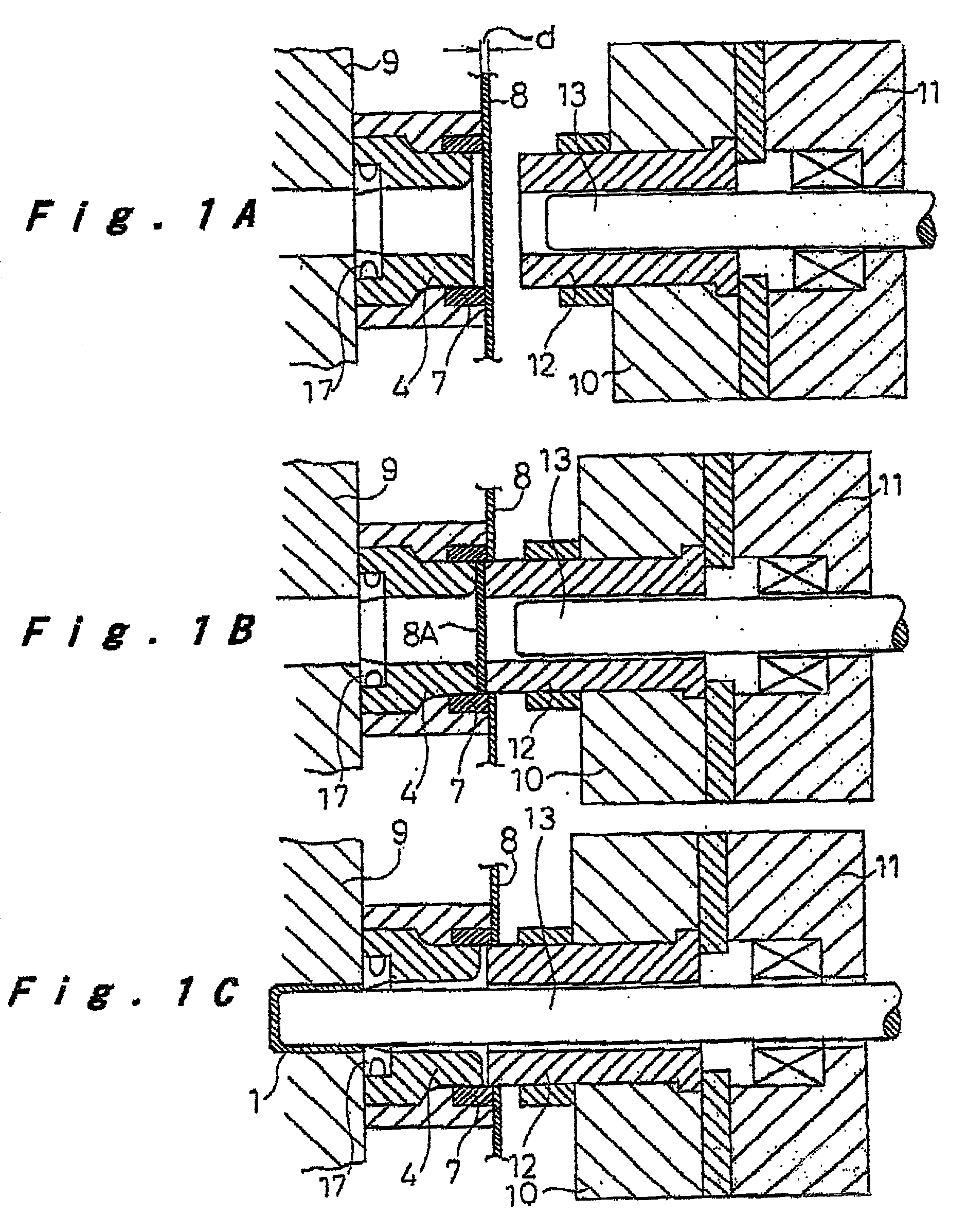Square cell container and method of manufacturing the cell container
- Summary
- Abstract
- Description
- Claims
- Application Information
AI Technical Summary
Benefits of technology
Problems solved by technology
Method used
Image
Examples
Embodiment Construction
[0041]Hereinafter, preferred embodiments of the present invention will be described with reference to the accompanying drawings. In a prismatic battery case manufacturing method according to one embodiment, at a first process step shown in FIG. 1 representing a schematic horizontal sectional view, a battery case material 8 is subjected to punching and deep drawing so as to a first intermediate cup element 1 having a nearly circular, substantially elliptic cross section as shown in FIG. 4. At a second process step shown in FIGS. 5 and 6, the first intermediate cup element 1 is subjected to four steps of redrawing processing successively so as to form a second intermediate cup element 2 with a substantially elliptic cross section having a smaller minor-axis-diameter to major-axis-diameter ratio as shown in FIG. 7. Subsequently, at a third process step shown in FIG. 8 representing a schematic horizontal sectional view, the second intermediate cup element 2 is subjected to DI processing...
PUM
| Property | Measurement | Unit |
|---|---|---|
| Fraction | aaaaa | aaaaa |
| Shape | aaaaa | aaaaa |
Abstract
Description
Claims
Application Information
 Login to View More
Login to View More - R&D
- Intellectual Property
- Life Sciences
- Materials
- Tech Scout
- Unparalleled Data Quality
- Higher Quality Content
- 60% Fewer Hallucinations
Browse by: Latest US Patents, China's latest patents, Technical Efficacy Thesaurus, Application Domain, Technology Topic, Popular Technical Reports.
© 2025 PatSnap. All rights reserved.Legal|Privacy policy|Modern Slavery Act Transparency Statement|Sitemap|About US| Contact US: help@patsnap.com



